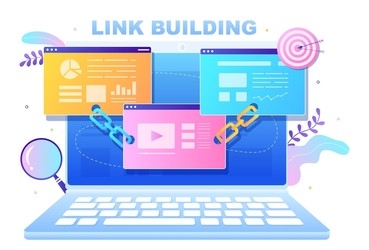Internal linking is an important component of SEO strategy because it improves website ranking and user experience. Internal linking helps search engines better comprehend the structure of your website, boosts page authority, and attracts more traffic by referring to relevant pages on your own website. This post will go through the significance of internal linking, its benefits, and how to use it on your website.
Importance of Internal Linking
Internal linking is essential for search engine optimization of your website. When you connect the pages of your website, you build a network of connections that allows search engines to crawl and index all of your pages more quickly. By including contextual connections between pages, you are informing search engines about which pages are the most significant and relevant to users.
Benefits of Internal Linking
Internal linking has several benefits that can help improve your website’s ranking and user experience:
1. Improved Search Engine Ranking
Internal linking assists search engines in understanding the structure and importance of the pages on your website. You can boost the authority and ranking potential of significant pages by connecting to them from other pages. This makes it easier for search engines to recognize the most relevant material on your website and display it higher in search results.
2. Increased Page Authority
You can boost the page authority of significant pages by connecting to them from other pages. This means that search engines regard the linked page as more essential, which might result in higher search ranks and more traffic.
3. Better User Experience
Internal linking enhances the user experience on your website as well. Users can quickly traverse your website and get the information they want by offering contextual links to related material. This can lead to greater engagement, longer visit durations, and more repeat visits.
4. Increased Pageviews
You can enhance the amount of pageviews each visit by linking to other pages on your website. Users are more likely to click over to adjacent pages and explore your website more when they find relevant content linked inside a page.
How to Implement Internal Linking
Internal linking on your website is simple to implement, but it does involve some preparation and technique. Here are some pointers for creating successful internal links:
1. Use Descriptive Anchor Text
Provide descriptive anchor language that appropriately portrays the content of the referenced page when linking to other pages. This not only assists users in understanding what they are clicking on, but it also assists search engines in determining the context of the link.
2. Link to Relevant Pages
Link to additional pages on your website that are related to the current page’s content. This gives users more information and signals to search engines that the connected pages are related.
3. Use a Hierarchical Structure
Create a hierarchical framework for your internal connections that represents the importance and relevancy of each page. This helps search engines understand your website’s structure and the relationships between pages.
4. Use Internal Links in Content
Provide internal links to other relevant pages on your website while developing fresh material. This not only adds context for readers, but it also aids search engines in identifying the most significant pages on your website.
Conclusion
Internal linking is an essential component of any effective SEO strategy. You may boost your search engine ranking, page authority, user experience, and pageviews by linking to relevant pages on your own website. By following the guidelines in this article, you may properly install internal linking on your website and gain improved search engine results.
FAQs
- What is internal linking, and why is it essential for SEO?
The process of linking to other pages on your own website is known as internal linking. It is necessary for SEO because it assists search engines in understanding the structure of your website and the relationships between pages, which can lead to enhanced search engine ranking, increased page authority, a better user experience, and more pageviews.
- How can I determine which pages to link to within my website?
Consider linking to pages that are related to the material on the current page, have high-quality content, and have high page authority when deciding which pages to link to inside your website. Use tools like Google Analytics to find popular pages on your website that could benefit from more internal links.
- How many internal links should I include in my content?
The quantity of internal connections you should add in your material is determined by its length and depth. As a general rule, try for at least 2-3 internal links every page, but don’t go overboard. Users may become distracted and confused if there are too many internal links.
- Can internal linking help with external link building?
Internal linking, while primarily concerned with linking to sites within your own website, can indirectly aid in external link building. Internal linking increases the possibility of other websites linking to your content by enhancing your website’s search engine rating and page authority.
- How often should I review and update my internal linking strategy?
It’s a good idea to frequently assess and change your internal linking strategy, especially as your website develops and evolves. Internal link audits and upgrading to reflect changes in your website’s structure or content on a regular basis will assist guarantee that your website is always optimized for search engines and provides the greatest user experience possible.
As a London-based Technical SEO Strategist, I've worked with top firms like BT.com, EE.co.uk, Tripadvisor, Yopa, and various digital marketing and cloud computing companies. My extensive experience in SEO, including outreach, helps me create impactful strategies informed by the latest industry trends, ensuring innovative solutions for diverse industry needs.

